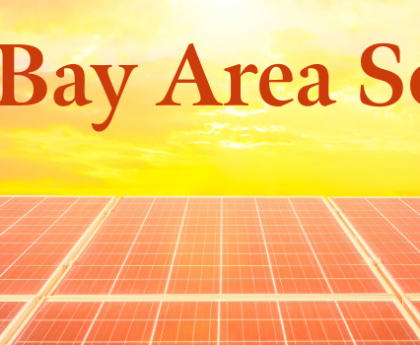
The visibility of a solar eclipse on Monday will be limited in the Bay Area, but that hasn’t dampened enthusiasm for the rare astronomical event.
“I’m looking forward to it,” said Ian McLorg, chief park ranger for Marin County Parks. “It’s something different that’s happening. I think getting off of our cellphones and engaged with what’s going on outside and around us is good for mental health.”
In the Bay Area, the event will begin at 10:14 a.m., peak at 11:13 a.m. and end at 12:16 p.m.
For around 32 million people who live within a 115-mile strip from Texas to Maine, it will be an entirely different story. The sun will be completely blocked by the moon for about 4 minutes as it passes between the sun and the Earth.
The last total eclipse was in 2017, and there will not be another one in the contiguous U.S. until 2044.
While California is not in line for the full experience, NASA states that 34% of the sun’s area will be obscured in San Francisco and Oakland; 36% in San Jose; 20% in Seattle; 22% in Portland; 48% in Los Angeles; and 54% in San Diego.
For those looking to watch the event locally, McLorg recommended Lagoon Park by the Marin County Civic Center in San Rafael. He said it is accessible, has plenty of parking and great views of the horizon.
“Also, the train comes to the Civic Center, the buses come to the Civic Center,” McLorg said. “It’s easily accessible by car, the train, the bus, all those good things. I think that’s a great accessible location that’s flat and open, and inclusive for everyone.”
McLorg also recommended McInnis Park in San Rafael, but did note that it is more of a “driving destination.”
“It abuts the Santa Venetia marsh and doesn’t have a ton of obstruction, so you should be able to find a location with an unobstructed view,” he said.
In southern Marin, he suggested hiking to the top of Horse Hill Preserve at the end of Lomita Drive in Mill Valley. In western Marin County, he recommended Whitehouse Pool park near Inverness.
For residents looking to view the eclipse, it is essential to have special solar safety glasses that have the ISO 12312-2 rating — even for a partial eclipse. According to NASA, regular sunglasses, no matter how dark, are not safe to use. Looking directly at the sun can damage the retina, and can cause blindness.
Lauren Snell, a librarian at the Marin County Free Library, said the library received 4,000 pairs of eclipse glasses in the fall of 2023 — before the annular eclipse in October 2023 — to give out.
“We gave away more than half of them in the fall and the remaining pairs over the past couple of weeks,” Snell said.
All 10 library branches in the county distributed glasses. As of Thursday, the San Anselmo branch still had some on hand.
“For the public, this is the Super Bowl of astronomical events,” said Andrew Fraknoi, chairman emeritus of the astronomy department at Foothill College in Los Altos Hills. “It’s just wonderful.”
More information about the solar eclipse and safety can be found at bit.ly/3U5c2dD.
Bay Area News Group contributed to this report.
This post was originally published on 3rd party site mentioned on the title of this site



